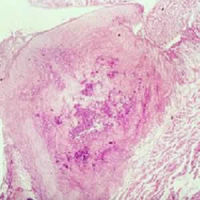A new statistical model has been developed by researchers at the University of Florida College of Medicine-Jacksonville that can predict risk of in-hospital death after transcatheter aortic valve replacement (TAVR). The study is published in JAMA Cardiology.
TAVR is used primarily in patients who have critical aortic stenosis and are not good candidates for SAVR. There already exist models that can accurately predict the risks for patients undergoing SAVR but to date, a comparable model did not exist for TAVR. This was an area of improvement since accurate risk prediction models for cardiac procedures are an essential component of patient-centric care.
This particular model was developed from 13,718 patients who underwent TAVR. The model was validated by using records from 6,868 patients. Covariates for the model included age, glomerular filtration rate, haemodialysis, New York Heart Association functional class IV, severe chronic lung disease, nonfemoral access site, and procedural acuity.
“This model is being incorporated into the standard TVT Registry software and should be a valuable adjunct for patient counseling, performance assessment, local quality improvement, and national monitoring of the appropriateness of patient selection for TAVR,” the authors write.
Source: JAMA
Image Credit: Wikimedia Commons
Latest Articles
In-Hospital Death, Transcatheter Aortic Valve Replacement, TAVR, statistical model, cardiac procedures
A new statistical model has been developed that could predict the risk of in-hospital death after transcatheter aortic valve replacement (TAVR). The model should be a valuable adjunct for patient counseling, performance assessment, local quality improveme



























